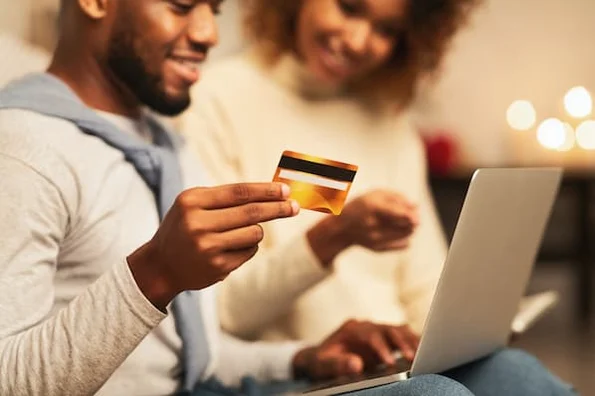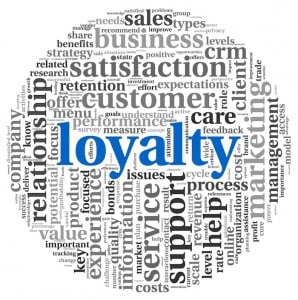But the point is, in the ten years I've lived in Miami, Florida, this brand has achieved something every business wants: loyalty.
Brand loyalty is a concept that feels like lightning in a bottle – so hard to capture. Let's dive into what it is and how your brand can build it with your audience.
Everyone has brands they feel loyal to. For some, it's their coffee shop down the street. For others, it's their internet provider. It could even be a brand you've never purchased from but feel connected to. That pull you feel typically comes from one place: trust.
But before we get too deep into it, let's go through the difference between customer loyalty and brand loyalty. The former relies on your products and/or services, while the latter rests on your brand's image.
To earn customer loyalty, your brand needs to serve that customer's financial needs and satisfy their expectations.
Brand loyalty, on the other hand, is driven by a consumer's connection to your brand. Loyalists are swayed by factors other than the product(s) or service (s) you offer.
For instance, you can increase a customer's loyalty with the right pricing strategy, discounts, and customer service. To earn brand loyalty, however, you'll need to connect with them on a personal level.
A loyal customer says, "I trust your product," a brand-loyal customer says, "I trust your brand."
Levels of Brand Loyalty
Not all brand loyalists are created equal. This section breaks down how someone can start as someone who simply knows your brand to someone who is loyal to it.
Brand Recognition
Recognition is the first step in brand loyalty. Before a consumer can form an impression of your brand, they first need to be exposed to it. Once they recognize your brand, it may be the first thing that comes to mind when thinking of a certain product or service.
For instance, you may not spend a lot of time shopping for jewelry, but you might recognize Tiffany & Co. and associate it with luxury, romance, and beauty.
This recognition is due to the brand's extensive marketing efforts to become a household name and reach audiences that align or fall outside of their ideal buyer persona.
First impressions can last – so if you're looking to build a loyal audience, it's important that you invest your resources in making those initial touchpoints positive ones. Given the digital age we live in, this is most likely through your website and social media accounts.
Brand Preference
When someone prefers your brand, it means they'll choose your brand over another if all things are equal. However, they may still be swayed by competitors taking additional steps to appeal to your audience.
This is why it's important to create a robust brand identity and maintain it at every point in your company's growth.
Brand Insistence
At this level, your brand is no longer compared to other competitors. It's the highest level of loyalty and the level every business is striving for with its audience.
While a brand loyalist can reach brand insistence without ever purchasing a product, this is most common in customers. If a consumer already identifies with your brand and you provide an easy shopping experience plus a good product or service, you can turn a one-time buyer into a brand evangelist.
Why is brand loyalty important?
A loyal audience generates revenue. Their connection to your brand translates into consistent purchases that remain as your brand grows and expands.
A loyal customer may leave if your pricing no longer works with their budget. In contrast, a brand loyalist is not motivated by price and will likely continue supporting your brand through changes in the market.
Brand loyalty also means free promotion. A loyalist doesn't just support; they promote your brand to those around them. Word-of-mouth marketing is highly effective and can bring audiences who are on the fence to your side.
Every time a consumer endorses your brand, it brings you that much closer to earning a new customer. So, with this in mind, why not build that relationship with your current audience and let them grow your base alongside you?
Another reason to invest in building this loyalty is that it's sustainable. Because it's rooted in something deeper, it lasts longer. The only way to sever that connection is if your brand steers away from its identity and no longer resonates with consumers.
Brand Loyalty Statistics
Below are some interesting statistics on brand loyalty:
- To most consumers, one of the most valued aspects of shopping is earning rewards or loyalty points.
- 67% of consumers say they need to trust the brand behind a product or service. Having a good reputation isn't enough.
- It takes less than a second for a consumer to form an opinion on your brand after looking at your website.
- 40% of consumers between 18 to 34 years old trust a brand because of an influencer.
How To Build Brand Loyalty
Have a robust brand strategy.
The way you present your brand is the number one factor influencing how connected consumers feel to it. You want to develop a story around your brand that is authentic and relatable.
Your brand story should be in everything your business puts out, like your logo, mission and value statements, visuals, and copy.
As you build your brand identity and strategy, ask yourself these questions:
- What is your brand's personality?
- What should consumers associate with your brand?
- What story does your brand want to tell?
- What emotions does your brand name and/or tagline evoke?
Once you answer these questions, you'll then want to make sure it aligns with your user persona (i.e. the semi-fictional representation of your ideal customer). Is this what they're looking for? If not, go back to the drawing board until they line up. During this process, you can organize surveys, focus groups, and interviews to better understand your audience.
Figure out what your audience cares about.
Think about the people you're most loyal to. How did you get to that point? I'd imagine that part of this loyalty is rooted in shared values.
Consumers are loyal to brands they identify with. So, if you're not sure how to bridge the gap between your brand and your audience, start by identifying the values of your user persona. This should provide a good starting point to better understand your audience's motivations, behaviors, and concerns.
You can then use that information to craft messaging that resonates with them. This should be reflected not only on your website but all branded content – especially social media.
For example, I've become loyal to Fanm Djanm and Tabitha Brown (who is both an influencer and a brand) because they represent values that I resonate with. And what's most important is that they reflect those values in their creative assets, messaging, and products.
Build a community and engage with it.
Brand loyalty happens when you forge a connection with your audience.
The best way to do that is by building a community around your brand to further cultivate relationships.
There are a few ways to do this:
- Respond to your audience's messages on social media and encourage engagement on your posts.
- Launch a newsletter that allows you to reach out to your audience on a consistent basis. What's more personal than someone's inbox?
- Create a private group for your community and offer exclusive content.
Be proactive.
Nowadays, consumers have no problem telling brands exactly what they think.
At this very moment, Twitter users all over the world are tagging brands in their tweets, criticizing them, and airing out their grievances.
While not all criticism is worth engaging in, you'll definitely find some worth investigating internally. Be proactive in addressing issues that affect your brand's image.
This is why social monitoring is key to understanding how consumers view your brand. From there, you can adjust your messaging and marketing strategy to better align with what they want.
Personalize your marketing efforts.
Whenever I get "Happy Birthday" emails from brands, I instantly feel more connected to them. And yeah, the discount in the email doesn't hurt either, but that's not what creates that feel-good moment.
It's the idea that I matter to the brand, even if it's an automated message with my name filling in the blank.
This strategy is also effective, as a 2020 Retail Customer Loyalty study found that almost 80% of senior marketers who surpassed their revenue goals had personalized their marketing strategies.
Personalized marketing efforts help your messages resonate better with your audience. It builds trust and can be an essential step in building loyalty.
Implement referral programs.
If you have loyal customers, why not incentivize them to spread awareness about your brand?
Reward programs allow customers to earn special discounts on products or services when they refer the brand to other people.
While some brand loyalists may already be promoting your brand, this serves as an additional reminder that can increase their loyalty even more.
Brand Loyalty Examples
When was the last time you used a search engine other than Google to search for something? For me, I can't remember.
And it's not because the interface or user experience is wildly different on other search engines. Somehow, Google has built this loyalty from online users which has made it the number one search engine in the world.
Apple
Apple is described as having a cult-like brand following, as its audience is so dedicated that nothing or no one can persuade them to go elsewhere.
The brand appeals to consumers who value innovation, creativity, and minimalism.
Apple has maintained a consistent brand identity since its inception in the late '70s, and that is likely one of the keys to its success.
Your Favorite [Insert Here]
I could name hundreds of businesses that are known to have exceptional brand loyalty, but the best examples come from your own experience.
Think about the brands you're loyal to. It can be your local grocery store or a brand you love following on social media.
You likely are loyal to them because they offer more than just products or services. Through a consistent branding strategy, they have earned your trust, and your support becomes second nature.
Brand loyalty isn't something you can whip out of nowhere. You have to start with your brand strategy and work with your team to identify gaps with your audience. Once you do, all you have to do is continue fostering it, and the support will follow.
Brand Awareness


![28 Brands That Go By Different Names in Different Countries [Infographic]](https://53.fs1.hubspotusercontent-na1.net/hubfs/53/%5BAgency_Post%5D/Blog_Images/brand-names-different-countries.png)

